Prophet Muhammadﷺ in Vedic Texts: A Scholarly Review of Dr. Ved Prakash Upadhyay’s Work
"From the point of view of the fundamental principles of religion, there is no difference between the two." – (p. 75)
With detailed explanations, strong validation from various sources, a smooth narrative, and well-drawn analogies, Muhammad in the Hindu Scriptures leads to a conclusion that echoes the excerpt above. While scholarly debates persist regarding references to Prophet Muhammad (ﷺ) in Hindu epics—focused on questions of authenticity, interpretation, historicity, and textual alterations over time—Dr. Ved Prakash Upadhyay’s (b. 1947) work remains both intriguing and thought-provoking for its exploration of the intercultural and timeless presence of the final Messenger (ﷺ).
Books and Authors
Originally written in Hindi, Dr. Upadhyay’s two separate works, Kalki Avatar Aur Muhammad Saheb (trans. Kalki Avatar and Muhammad) and Naraashans Aur Antim Rishi (trans. Narashangsa and the Final Prophet), were published in 1969 and 1970 by Saraswat Vedanta Publication Society, Allahabad[1]. These publications sparked widespread discussion, garnering both praise and criticism across India.
Soon after, these works were translated into Bengali by Prof. Ashit Kumar Bandhopaddhyaya, former director of the Sanskrit Academy, with the addition of another of Upadhyay's works, Religious Unity in the Light of the Vedas (translated). The translation also included a five-part appendix by the translator, as well as a separate section titled Islam in the Eyes of Non-Muslims, compiled by Dr. Gouri Bhattachariya, professor at Rabindra Bharati University. These contributions were collectively published under the title Muhammad in the Vedas and Mahabharata[2].
Following this, Upadhyay's research masterpiece was translated into various vernacular languages. Later, Islamic scholar Muhammad Alamgir combined all of these books, along with their English translations, into a single edition titled Muhammad in the Hindu Scriptures. This edition was published in 2011 by AS Noordeen (ASN) in Malaysia, and the current review focuses primarily on its English version, republished with permission by Islamic Book Service, New Delhi[3].
Discussions in Detail
The descriptions of "the Promised," "the Awaited," "the Prophesied," and "the Ultimate" are common across various religious texts, including the Vedas, the Bible, and Buddhist scriptures. These prophecies, despite historical alterations[4], point to a future figure who would fulfill a final role. Through a historical and textual analysis of these claims, Dr. Ved Prakash Upadhyay argues that the figure being referenced is none other than the Praised Prophet Muhammad (ﷺ). His work emerges from a conviction that "the truth must be revealed, even if it is distasteful to some."[5]
As previously mentioned, Muhammad in the Hindu Scriptures is actually a compilation of works by three authors. In terms of the structure of the current edition, Book One, Book Two, and Book Three were originally written in Hindi by Ved Prakash Upadhyay in its initial release. Prof. Ashit Kumar Bandhopaddhyaya contributed to the work by adding Muhammad in the Vedas and Mahabharata as Book Four, translating the earlier chapters into Bengali. Finally, Islamic scholar Muhammad Alamgir compiled and translated the entire body of work into English, thus presenting it under the title Muhammad in the Hindu Scriptures.
Narashangsa and Maitreya
The first book (Narashangsa and the Antim Rishi, pp. 3-36) consists of six chapters, offering detailed information and in-depth descriptions of two figures mentioned in ancient Indian texts: Narashangsa and Maitreya. The author engages in an etymological discussion of Narashangsa, skillfully exploring the similarities between this figure and Prophet Muhammad (ﷺ) by comparing their appearance, circumstances of arrival, and qualities.
Initially, Dr. Upadhyay examines the frequent mention of Narashangsa, which translates to "the Praised Man," a term that, according to the author, is supported by evidence found in Vedic mantras and hymns. He scrutinises Narashangsa’s spiritual, social, physical, and intellectual qualities and, through a comparative lens, associates these traits with the life of Prophet Muhammad (ﷺ), the one known as “the Praised.” The author concludes that no discernible differences exist between Narashangsa and Muhammad. Readers are led to the conclusion that "Narashangsa" and "Muhammad" are synonymous, with every quality attributed to Narashangsa being fully embodied by Prophet Muhammad (ﷺ)[6].
For instance, the prophecy in the Atharvaveda that Narashangsa would have twelve wives is seen as uniquely applicable to Prophet Muhammad (ﷺ)[7], as no other figure in human history is known to have had this number of wives. Furthermore, the author highlights the presence of Narashangsa’s qualities in non-Indian scriptures, drawing connections to the Prophet Muhammad (ﷺ) as the "Ultimate Sage" (in Deuteronomy), the speaker of God’s words, and the guide to humanity following Jesus Christ[8].
In the final chapter, Dr. Upadhyay delves into the characteristics of the Antim Buddha—Maitreya, as described in Buddhist religious texts—and finds these qualities to perfectly match those of Prophet Muhammad (ﷺ). After thorough analysis, he concludes that no one else in history, past or future, fits this description. Using the same method of comparison, he establishes comprehensive similarities between Maitreya, the Antim Buddha, and Prophet Muhammad (ﷺ), the Seal of the Prophets (Khatamun Nabi).
The first book concludes with the profound statement: “The root is the same. The difference is in the language.” This statement reflects the author's desire for mutual understanding between Hindus and Muslims. It identifies the misinterpretation and corruption of religious messages as key causes of hostility among different faith communities[9].
Kalki Avatar - The Final Prophet
The second book (Kalki Avatar and Muhammad, pp. 45-77) is instructively presented to demonstrate that Hindu scriptures, from ancient times to the present, contain references to a figure who closely resembles Prophet Muhammad (ﷺ). Following a similar pattern of analogy as in the previous sections, the author argues that Kalki Avatar, a prominent figure in Hindu tradition, bears striking similarities to the Prophet (ﷺ).
In the ancient Indian context, Kalki Avatar is prophesied to appear in Kali-yug—the fourth and final age of creation—and is recognised as the last of the twenty-four avatars[10]. Dr. Ved Prakash systematically traces references to Kalki Avatar, gathering comprehensive details that mirror the life and characteristics of Prophet Muhammad (ﷺ). The author argues that the term "Avatar" is synonymous with "Prophet" in English and "Nabi" in Arabic. He cautions against the common misconception that prophets (Nabis) only emerged outside India, while avatars were confined to the Indian subcontinent. It will be a grave error, as the author warns, ‘to assume that Nabis arrived outside India and Avatars arrived within India’[11].
Dr. Upadhyay carefully examines the socio-cultural context described in the Puranas, in which the Final Avatar was destined to appear, and he identifies Prophet Muhammad (ﷺ) as this final figure[12]. To further strengthen his argument, the author even explores Kalki Avatar’s parentage and date of birth[13], drawing parallels to the Prophet’s (ﷺ) life.
In his conclusion, Upadhyay highlights the similarities between Hindu and Islamic concepts, such as "Astik" and "Muslim" (believer) and "Kafir" and "Nastik" (non-believer), underscoring commonalities between the two traditions.
Similarity and Unity
The third and final book of Upadhyay's work (Religious Unity in the Light of the Vedas, pp. 81-91) explores the intrinsic meanings of religions, their core messages, and their universal validity. The author critically examines the role of spiritual leaders and gurus, emphasising their responsibility as guardians of the fate of a religion and its community.
Upadhyay provides a concise overview of the origins of various Hindu scriptures, aligning their core contents with notable events in human and pre-human history. He highlights the theme of monotheism, or the unity of God, and compares it with the concept of prophets in other religious traditions. In this comparative study, Upadhyay draws a comprehensive conclusion: "The Essence of God is One. His qualities are many and have been described in various ways."[14]
Along the Same Lines
The fourth book, Muhammad in the Vedas and Mahabharata, contributed by the Bengali translator, delves into potential references to Prophet Muhammad (ﷺ) in the four Vedas: Atharvaveda, Samaveda, Rigveda, and Yajurveda. In the Atharvaveda, the Kuntup Mantras are attributed to Narashangsa, depicting characteristics and events that align uniquely with the life of the Prophet (ﷺ). These prophecies describe Narashangsa as one who will be highly praised, and the praise will come from none other than God Himself. He would be an immigrant (Mantra 1), a camel rider (Mantra 2), and a husband of twelve wives—traits and events that are clearly associated with the historical biography of Prophet Muhammad (ﷺ). The term "Mamaha" in Atharvaveda is identified as the Sanskrit form of "Muhammad," while the Prophet’s other name, "Ahmad," is mentioned in the Samaveda as "Ahamiddhi" in Sanskrit.
Further details about the Prophet's life, such as having "ten thousand disciples" intimately connected to him, are noted in these texts. This prophecy corresponds with the ten thousand followers present during the Conquest of Makkah (Fatah Makkah), as recorded in Islamic history.
In Yajurveda, additional predictions suggest that the Prophet would be a king who would establish God's kingdom on earth, symbolising his mission for the entire world. The author also highlights another characteristic of the Prophet (ﷺ) as "Agni" (fire or light). In the Rigveda, alongside the names Narashangsa and Eelit (both meaning "the Praised"), Muhammad (ﷺ) is referenced again. The text also contains hints of various military expeditions, which align with significant moments in the Prophet’s life.
The Mahabharata, too, contains several mantras that, with great passion and reverence, appear to be dedicated to this praised Prophet.
A Cautious Conclusion
In general, the author explores various potential references to Prophet Muhammad (ﷺ) within the Vedas, Puranas, Mahabharata, and other Hindu scriptures, supporting his claims with relevant textual evidence. Dr. Ved Prakash examines the characteristics and circumstances of Hindu mythological figures, such as the Kalki Avatar, through comparative analogies, asserting their similarity to Prophet Muhammad (ﷺ)[15]. A Wikipedia article cited in the trilogy identifies 28 similarities between Kalki and Muhammad[16].
Through his diligent research and the presentation of substantial evidence, Dr. Ved Prakash aims to reveal the truth to a broad audience despite the immense challenges involved. His brief yet compelling explanations, accompanied by impressive proofs, seek to foster reconciliation between the two religions. Key concepts like the "Unity of God," the "role of Messengers," and the "description of a Universal Religion" are examined, encouraging readers to develop greater respect and admiration for one another[17].
However, the translator Muhammad Alamgir, in his epilogue, issues a necessary precaution. While the work attempts to harmonise the two religious traditions, there is a risk that fundamental Islamic principles, such as Tawheed (the oneness of God), could be misinterpreted or compromised if not approached with careful scrutiny. This warning serves as a reminder that while interfaith understanding is valuable, it must be pursued without undermining the core tenets of either tradition.
About the Author
Md Sohel Mondal is from Jharkhand and is a postgraduate scholar at the Department of Civilizational Studies, Darul Huda Islamic University, Kerala. He writes regularly in both English and Bengali on topics related to Islam and current affairs. His latest book is 15 Characteristics of the Prophet Muhammad.
Citations
[1] Alim Husain, “Prophet Muhammad in Hindu Scriptures,” The Milli Gazette, March 2005, https://www.milligazette.com/Archives/2005/01-15Mar05-Print-Edition/011503200567.htm (accessed September 9, 2024).
[2] Ved Prakash Upadhay, Muhammad in the Hindu Scriptures, trans. Muhammad Alamgir (New Delhi: Islamic Book Service, 2011), p. IX.
[3] Ibid.
[4] Ibid. p. XIII.
[5] Ibid.
[6] Ibid. p. 4-17
[7] Ibid. p. 14.
[8] Ibid. p. 18-35
[9] Ibid. p. 41.
[10] Ibid. p.46.
[11] Ibid.
[12] Ibid. p. 63.
[13] Ibid. p. 65-67.
[14] Ibid. 83.
[15] Md S. Mondal, “Prophet Muhammad (ﷺ) in the Texts of Indian Non-Muslim Intellectuals,” Islamonweb English, October 17, 2023, https://en.islamonweb.net/prophet-muhammad-%EF%B7%BA-in-the-texts-of-indian-non-muslim-intellectuals (accessed September 9, 2024).
[16] “Ved Prakash Upadhyay,” Wikipedia, The Free Encyclopedia, last modified August 15, 2024, https://en.wikipedia.org/wiki/Ved_Prakash_Upadhyay (accessed September 9, 2024).
[17] Upadhay, Muhammad in the Hindu Scriptures, p. 82.
Key References
- Husain, Alim. 2005. “Prophet Muhammad in Hindu Scriptures.” The Milli Gazette, March 2005. https://www.milligazette.com/Archives/2005/01-15Mar05-Print-Edition/011503200567.htm.
- Mondal, Md S. 2023. “Prophet Muhammad (ﷺ) in the Texts of Indian Non-Muslim Intellectuals.” Islamonweb, October 17, 2023. https://en.islamonweb.net/prophet-muhammad-%EF%B7%BA-in-the-texts-of-indian-non-muslim-intellectuals.
- Upadhyay, Ved P. 2011. Muhammad in the Hindu Scriptures. Translated by Muhammad Alamgir. New Delhi: Islamic Book Service.
Disclaimer
The views expressed in this article are the author’s own and do not necessarily mirror Islamonweb’s editorial stance.

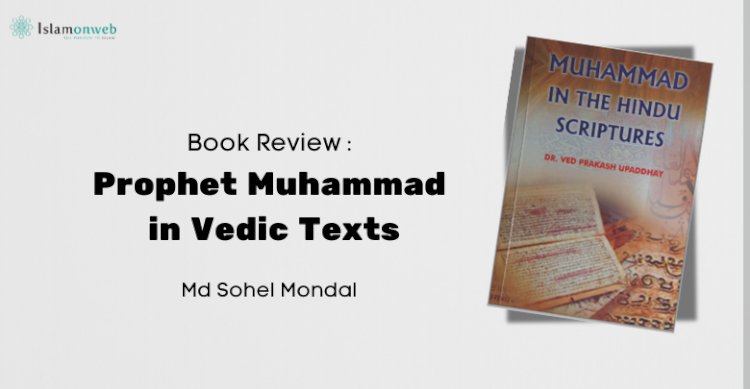


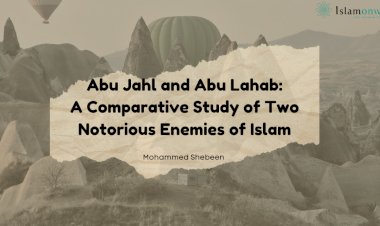
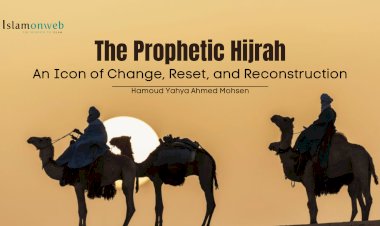
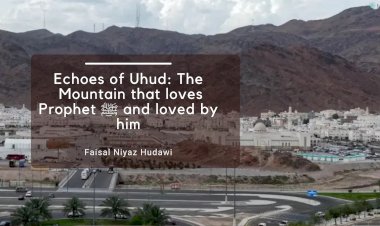
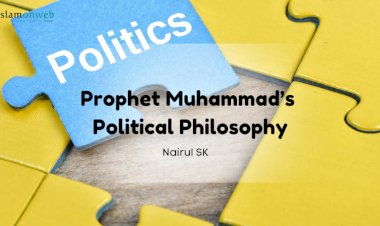
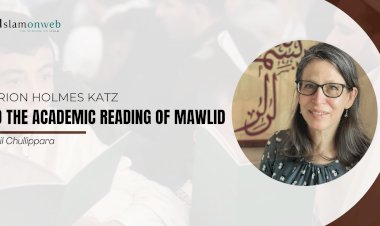
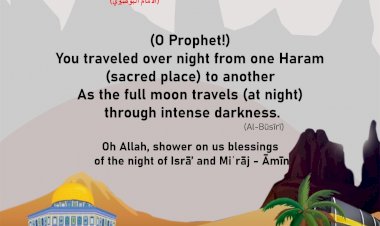














Leave A Comment